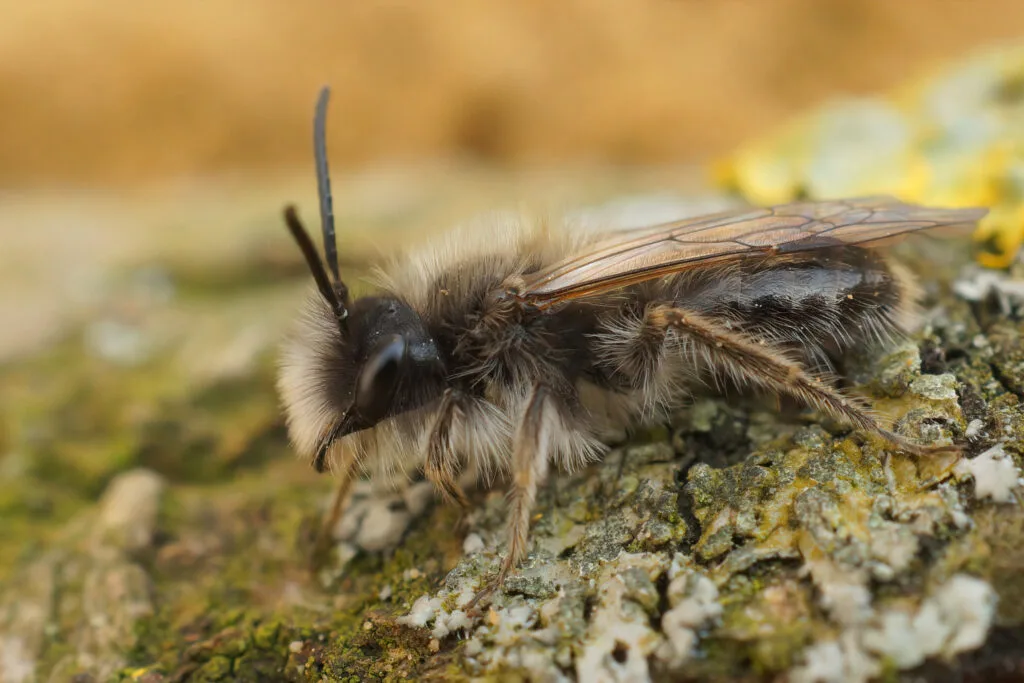Introduction
Apis dorsata, the rock bee or giant honey bee, is a honey bee that is found in South and Southeast Asia. They are typically around 17–20 mm (0.7 — 0.8 in) long and queen up to 22 mm. Nests are mainly built in exposed places far off the ground, like on tree limbs, under cliff overhangs, and under buildings.
Unlike domesticated honeybees, the Giant Honeybee (Apis dorsata) is wild and cannot be kept in hives. Its natural instincts drive it to create enormous vertical combs on high tree branches, cliffs, and building edges, sometimes exceeding 2 metres in length.
Key Specifications of Giant Honeybee (Apis dorsata)
| Specification | Details |
| Scientific Name | Apis dorsata |
| Common Name | Giant Honeybee (Apis dorsata) |
| Family | Apidae |
| Size | Worker: 17–20 mm; Queen: up to 22 mm |
| Appearance | Dark brown to black with yellow abdominal bands |
| Habitat | Tropical forests, cliffs, tall trees, urban high-rises |
| Diet | Nectar and pollen |
| Lifespan | Worker: 6–7 weeks; Queen: up to several years |
| Nesting | Huge single combs on open, elevated structures |
| Behaviour | Social, migratory, excellent pollinators |
| Conservation Status | Not endangered but threatened by habitat loss, hunting |
Nests
Apis dorsata builds a very distinctive nest compared to other bees in its genus. Each colony creates a single vertical comb made from wax produced by worker bees, which hangs openly from a high surface and is shielded by dense layers of bees. These combs can grow up to a metre long, with neatly hexagonal cells that serve both for storing honey and rearing larvae. Honey is usually stored in the upper corners of the nest.
Their nests are always exposed and placed in elevated spots, such as tall trees or urban buildings, though they avoid weak or unstable structures. In some areas, large aggregations form, with up to 200 colonies nesting on a single tree. Each colony may contain as many as 100,000 bees, often with only a few centimetres separating neighbouring nests. Remarkably, many colonies show nest recognition, returning to the same sites even after migration.
Habitat & Behaviour
The Giant Honeybee is native to South and Southeast Asia, with dense populations in India, Nepal, Sri Lanka, Thailand, and Indonesia. True to its name, the Giant Honeybee (Apis dorsata) constructs colossal nests single exposed combs that can stretch up to 2 metres long and house more than 60,000 bees.
Highly defensive, the Giant Honeybee (Apis dorsata) exhibits remarkable group behaviour. When threatened, thousands of workers perform a shimmering wave-like motion, known as “shimmering,” to deter predators such as hornets or birds. They are also migratory, shifting colonies seasonally to follow blooming flowers.
Diet & Honey Production
The Giant Honeybee (Apis dorsata) feeds primarily on nectar and pollen. Its large colony size and high foraging efficiency produce significant amounts of wild honey, which is highly prized for its unique flavour and medicinal properties. Honey hunters often harvest from these massive combs using traditional techniques.
Life Cycle
Similar to other honeybees, the Giant Honeybee (Apis dorsata) has a caste system of queen, drones, and workers. Queens lay eggs in brood cells; workers care for larvae and build combs, while drones mate with virgin queens. Colonies reproduce through swarming, establishing new nests in optimal locations.
Ecological Importance & Conservation
The Giant Honeybee (Apis dorsata) is a keystone pollinator for wild and cultivated plants. Its pollination supports forest ecosystems and agricultural crops. However, habitat destruction, pesticide use, and unsustainable honey hunting threaten local populations. Conservationists advocate sustainable honey harvesting and the protection of nesting sites.
FAQs about Giant Honeybee (Apis dorsata)
Q1. Can Giant Honeybees be domesticated?
No. The Giant Honeybee (Apis dorsata) is strictly wild and resists living in artificial hives.
Q2. How big can their nests get?
A single Giant Honeybee (Apis dorsata) comb can exceed 2 metres and house over 60,000 bees.
Q3. Is their honey safe to eat?
Yes. Honey from Giant Honeybee (Apis dorsata) is edible and valued for medicinal benefits, but harvesting should be sustainable.
Q4. Are Apis dorsata aggressive?
The Giant Honeybee (Apis dorsata) is highly defensive and will aggressively protect its nest if disturbed.
Q5. Where are they found?
The Giant Honeybee (Apis dorsata) thrives in South and Southeast Asia, particularly in India, Nepal, and Indonesia.







